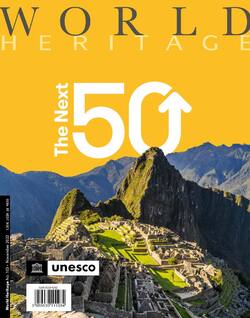The two Temples of Ramses II at Abu Simbel and the Sanctuary of Isis at Philae are the most illustrious of the Nubian Monuments from Abu Simbel to Philae (Egypt), listed as World Heritage since 1979. The Great Temple, fronted by four colossal 21-metre statues of Ramses II, is particularly awe-inspiring. Carved out of solid rock in the 13th century BCE, it celebrates the reign of Ancient Egypt’s mightiest pharaoh with a stunning show of his civilization’s technical and artistic skills.
In 1959, this magnificent relic risked annihilation. Egypt was building the Aswan High Dam, needed to boost its agriculture and power supply. The resulting reservoir lake would drown the area’s monuments. Already the island of Philae was submerged periodically by the Nile’s rising waters. Egypt and its neighbour Sudan asked UNESCO for help to safeguard their precious Nubian heritage.
This is where the story of the World Heritage Convention begins. UNESCO took up the challenge and activated a spectacular rescue operation. The Organization, then only in its fourteenth year, would show the world how the treasures of the past could be preserved for future generations, and not sacrificed in the name of progress. The key was international solidarity. UNESCO convened top experts – hydrologists, engineers, archaeologists, architects – who devised a radical plan: temples would be dismantled, moved to higher ground and reassembled.
On 8 March 1960, the International Campaign to Save the Monuments of Nubia was launched at UNESCO. Director-General Vittorino Veronese stressed the monuments’ universal value. French Minister of Culture André Malraux praised UNESCO’s bold plan – ‘a kind of Tennessee Valley Authority of archaeology’ – and defined its significance: ‘Your appeal is historic…because through it the first world civilization publicly proclaims the world’s art as its indivisible heritage.’
UNESCO’s Member States rallied to the cause. Some 30 countries formed national committees to support the operation. Around the world, the rescue of the endangered monuments captured the public’s imagination.
From 1960 to 1980, UNESCO orchestrated the gigantic project. Archaeological research in the flood areas was intensified, yielding exciting new discoveries. In all, 22 monuments and complexes were saved by 40 technical missions from five continents. Massive temples, notably those of Abu Simbel and Philae, were relocated. Total cost came to US$80 million, half of which was donated by some 50 countries.
For the temples of Ramses II, time was short; Lake Nasser was filling up fast. In November 1963, workers using wire saws started slicing them up. More than a thousand blocks, each weighing some 30 tons, were numbered, moved to storage and finally reassembled within a specially built artificial cliff, 64 m above the old site and 180 m inland.
Abu Simbel was inaugurated in its new location on 22 September 1968. The Philae monuments, the last to be saved, were transported to the higher Agilkia island between 1972 and 1979.
These epic technical exploits set a new standard for reconciling modern development and heritage protection. UNESCO proved it could muster the world’s best expertise and secure the backing of the international community to protect humanity’s collective heritage.
Remarkably successful, the Nubian campaign put heritage preservation – and UNESCO – in the spotlight. It spurred the development of the World Heritage Convention and led to other landmark safeguarding campaigns in Italy, Pakistan and Indonesia.

